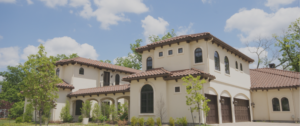
What Real Estate Pros Look for When Buying their Own Home
Buying a home can be a daunting task. There are so many factors to consider when making one of the largest investments of your life. Here are some of the things agents and other real estate pros look for when buying their own homes.
How easily will I be able to sell this in future?
It’s very easy to look at a home you are interested in through the lens of your own personal wants and needs. But you should always be thinking about a home like it is an investment. If you ever want to cash in, you have to be able to sell it. Here is what the real estate pros are going to look for in their own home.
- Layout and flow. Does the house have a good flow or is it chopped up and boxed in? Buyers want the open concept with rooms that flow in to a each other. The trigger words here are whether a house has “good bones” or not. Good sized one stories are going to appeal the most to the masses. Families with young children along with buyers over the age of 65 will often shy away from 2 stories because the stairs are too much to deal with.
- Helpful tip to overcome this challenge: If the house does not have an open floor plan, can that be fixed? Are there walls you can take down or open up? If so, you may be able to snag a great deal on a house that is not appealing to the masses and fix the glitch to make it perfect for you and a future buyer.
- Kitchens and master baths should be on your radar immediately. You’ve heard the saying “kitchens and bathrooms sell houses” right? Well it’s a saying for a reason, because they do. If a house has a small galley kitchen or a tiny master bath, when you go to sell, expect to hear some negative feedback.
- Are there any geographical challenges within the neighborhood. When you buy a home from a builder, they have things called “lot premiums”. Lots on a cul-de-sac, backing to a green belt, oversized corner lots, or lots with large trees are more expensive and much more desirable. So the builder will charge extra to build on those lots. Those kinds of lots are ideal when purchasing a home. There are also lots you want to steer away from that may hinder your ability to sell for top dollar down the road. Those are lots that:
- Back to a busy street or commercial property
- Have frontage on a major road with a lot of drive by traffic
- Are smaller than average in the neighborhood
- Are oddly shaped, limiting functionality
- Don’t just look at the inside. A homes curb appeal and exterior functionality is also a large factor in that homes “salability”. It is easy to get enamored with the interior finishes, but the yard and functionality of the outdoor space is important to a lot of buyers and should be important to you.
Is it possible to add value?
Agents looking for their own properties will want to know there is potential to add value. That could be as extreme as a whole home remodel or something more simple like replacing dingy carpet with wood or laminate floors. Or being able to update the kitchen and bathrooms. The neighborhood needs to be able to support those types of value adds so the investment is worth while. Sprucing up a home can be a lot easier than one might think and often times more affordable. Many retailers or whole sellers of flooring, granite, appliances, etc will be able to handle the demo and the install for you so you never even need to get your hands dirty. If you are willing to get in their and tackle a project on your own, see our previous post DIY Projects that Will Help You Sell for More for some great ideas on projects that will add value and not break the bank.
Where is the home positioned in the neighborhood?
Buying and outlier in a neighborhood can leave you in a tight spot for resale. You want to be towards the bottom or right in the middle, giving you plenty of room to appreciate or add value on your own. You may want to stay away from homes that fall in these categories.
- Most expensive house on the block (or very close to the top of the price point)
- More susceptible to dips in the market and likely the first to take the plunge in value
- Largest house in the neighborhood
- The largest floor plans typically find themselves at the top of the price point and take a much more unique buyer
- The nicest house in the neighborhood
- These will typically have a very high price per sq/ft and can limit the ability for that house to appreciate over time. They also won’t have much if any opportunities to add value to the home. If you are already at the top of the market, doing projects that fit YOUR lifestyle are not likely to add value because there is no more room to go up.
- The smallest home in the neighborhood (or a home with less than 3 bedrooms and 2 baths)
- There are exceptions to this if you are in a very hot area and smaller homes are the norm, but in an area where 3 and 4 bedroom houses are the most common having a smaller house can be tough to sell. You want to tap in to the largest buyers pool possible and having limited bedrooms and bathrooms chops out a huge chunk of buyers who must have the space.
Flex space is important
It’s not all about square footage, functionality is huge. Buyers want to have flexible space in their homes like a second living room, den, study, office, game room, etc. A great floor plan with a lot of flexible space will always be appealing to buyers.
What areas have the best opportunities for rapid growth
You’ve heard the saying “location, location, location”, everyone knows that but not everyone can afford that. So if you are on a budget, buying in an area that has tons of upside on growth and appreciation is what agents will look for when investing in their own home. What are some of the signs.
- Rapid year over year appreciation. What affordable areas have surged within the past 1-3 years? Those are the areas you need to be looking in.
- Lots of new infrastructure planned for the future. Is there an area that is under-valued with big plans for a large new company, or an outdoor mall with shops, eateries, bars and restaurants rolling in? This type of infrastructure in areas outside of a major metro has huge potential to drive buyers and drive up property values.
- Great schools or rapidly improving schools. You may not have kids or plan on having kids in the near future but you should still care about the schools around you because lots of buyers will.
- GreatSchools.org is one of the best sites to find information on school ratings
So lets re-cap. Chances are a real estate pro buying their own home will be looking for the following:
- A single story home (or a great deal on a 2 story with a good floor plan)
- With a solid, open floor plan
- Turn key or room to make affordable renovations
- Medium sized (for the neighborhood) with a good amount of flexible space
- Great kitchen and master suite
- Solid curb appeal and back yard space
- located in the bottom or middle of the price point for the neighborhood with room to appreciate
- In and up and coming or rapidly appreciating area
- Feeding in to good schools
- Infrastructure for groceries, shopping and night life in a close proximity
Once you find the perfect home, you still have to lock in a contract. Check out a previous blog article Home Buying Tips in a Seller’s Market to help navigate the the purchase process.
Related Posts
7 Best Apps for Real Estate Investors in Texas
Texas homes continue to move quickly, with many properties listed for less than two months before they find a buyer. In a local market where inventory remains low and prices stay high, real estate investors…
Selling Your Home Made Easy: 10 Expert Tips for Success
Selling a home is more than just putting up a “For Sale” sign—home selling made easy is about strategy, timing, and making the best possible impression on potential buyers. The real estate market moves fast,…
How Do You Sell a House Without a Realtor in Georgia?
Selling a house without a realtor in Georgia is entirely possible—and it can save you thousands in real estate commission fees. But before jumping into the FSBO (For Sale By Owner) process, it’s important to…




